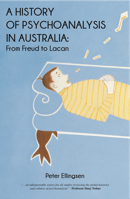We don’t tell the truth about life: you just have to look at the media to see that. But it is less obvious that we dissemble about death. I am not talking about the way death in our culture is sanitised; I am referring to an understanding of what it means for life to end. The end of life is not — as TV and movies pretend— a cessation of animation. Watch anyone dying on the box or at the cinema and what you see is a body which stops moving, that is, an actor who freezes her limbs and expressions. But playing dead is not death. Someone is still alive inside. Death, as I found when I saw a friend die in a road accident recently, is life leaving the body in a moment you can’t measure.
A dead body has absolutely no relation to the person who was, seconds ago, alive. It is utterly other; ‘uncanny’ in Freud-speak, or to invoke Lacan, ‘an invasion of the real’. This is what is shocking about death. Somehow — and physiological and neurological textbooks are not enough to explain it — a person becomes a body without being. It is the being — Lacan would say ‘speaking’ being — that enacts the body, and once it is gone, so is any connection to the person. You can’t find the one you know in a dead body. That probably sounds obvious, but when it happened to me I was dumbfounded.
I had seen dead bodies, before but they were of strangers. Knowing how a person moved, talked and walked, changes everything. It was especially imprinted on me as I applied CPR to my friend. The physical contact was eerie, not only because he did not respond, but because the complete lack of colour in his face made me suspect he was gone. Despite not being able to detect a pulse, I kept up the CPR for half an hour, until the emergency vehicles arrived. It was useless. He had died immediately, they told me, which is possibly a good thing from the point of view of the suffering he might have experienced had he clung on a while longer. But as I tried to digest what had occurred, I was left with the disjunction between a friend and a dead body. That gap was total and final in a way that I could not have prepared for. It was the distance between something I had imagined and something I encountered.
There were, again using the concepts of Lacan, no signifiers that could either flag the event or make it digestible once it occurred. It was completely discombobulating, which is the way Lacan describes ‘the real’, the register that cannot be symbolised to make it accessible to meaning and interpretation. While talking about it, that is, creating signifiers to try to unravel the associations it evokes and to defuse its uncanny edge, does help, something remains, which retains the essential trauma.
‘The real’ for Lacan is the object of anxiety, lacking any possible mediation. It is the missed encounter with this real object that offers itself as trauma. Life is, of course, inevitably traumatic. Everyone experiences some early loss which is construed as a wound. And it is how such early wounds are dealt with which determines the severity of subsequent loss. Trauma, as we know, is not felt uniformly even if the events that produce it are. We are made up of those we have loved and lost, and how we have been able to let go.
This is not simply ‘getting over it’. There is no such thing as ‘closure’ and time does not heal all wounds. At 64, Freud felt he was growing old. It was the year that he lost his second daughter, Sophie, to influenza. She was just twenty-seven. Three years later in 1923, her younger son, Freud’s only grandson, died from TB. Freud never got over it, and never wanted to. In a letter written in 1929, he said he knew the mourning would pass, but not the loss.
‘We shall remain inconsolable and will never find a substitute,’ he wrote to Ludwig Binswanger, the man who founded existential psychoanalysis. ‘No matter what may fill the gap, even it be filled completely, it nevertheless remains something else. And actually, this is how it should be. It is the only way of perpetuating the love…’
A month after his grandson’s death Freud told the Hungarian psychoanalyst, Sandor Ferenczi, that, for the first time in his life, he felt depressed. But as the New York chronicler of psychoanalysis, Kurt Eissler, has written, this was not despair. While Freud was sad he was a stranger to despair. He knew, as he explored in ‘Mourning and Melancholia’, that loss requires mourning and that it was not the same thing as bleakness. Bleakness is what occurs when mourning is eschewed and loss denied.
We live at a time when death is camouflaged, or made stylish or saccharine. This is a measure of our fear, not our humanity. Life has meaning because it ends and that end, while seldom welcome and often unpredictable, has a quality that can make life richer. Life is at its most precious when it is clear that you can lose it. Just ask any BASE jumper, or motorcyclist, which was what my friend was when he died aged fifty-nine.

